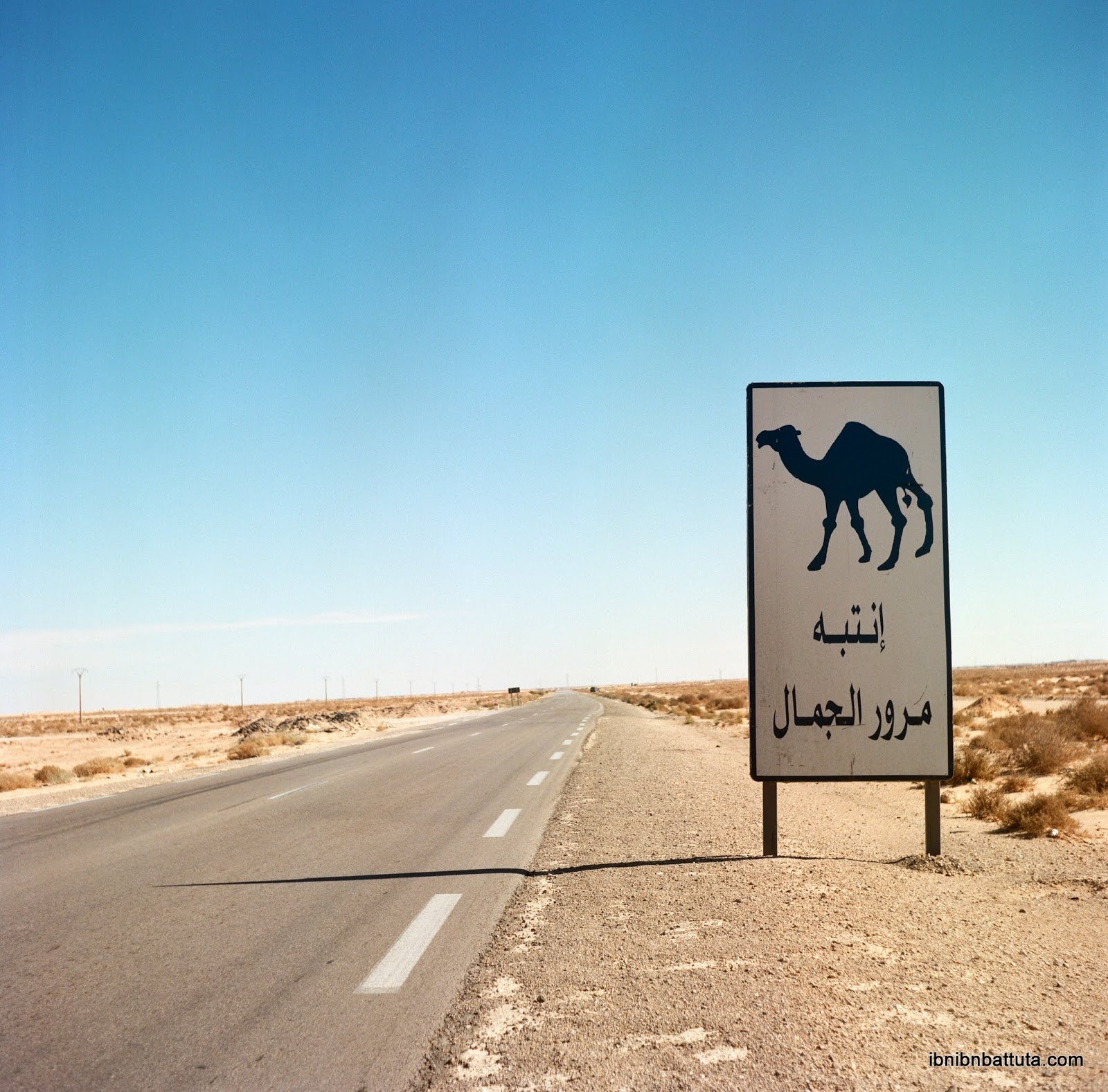The Road to El Oued, City of a Thousand Domes and More
A visit to El Oued, a.k.a. Oued Souf, a unique destination deep in the Algerian Sahara.
Bachir, Baha', and Khaled, my hosts in El Oued, took me to visit the dunes that rise at the city's edge.
From Biskra, my route took me further south into the Sahara.
After leaving the palm groves ringing Biskra, my taxi turned onto a two-lane desert highway that stretched, straight as an arrow, as far as the eye could see into a desolate, sandy void. This, he told me, was the route to El Oued.
The choice of El Oued's name—meaning "the river" in Arabic—must surely have been aspirational, I mused, as we raced past scrub and dunes and not much else. But while the terrain looked to be about as dry as any other in the Sahara, that soon changed. To the left and right of the highway, vast brown expanses appeared through the rippling heat. (It was still late January, but already quite warm at midday.) Further on, the road arced toward one of the mud lakes, and I got a closer look: this was a chott, a muddy depression where the region's brackish groundwater seeps to the surface, turning hundreds of square kilometers into untraversable muck.
Camel crossing: There are some Saharan stereotypes that El Oued doesn't even bother trying to break.
Here and there along our route, I noticed a rise topped by a crumbling mud-brick tower. These, I later learned from my colleagues in El Oued, were guemira towers, built as way posts at periodic intervals to help early travelers navigate, or guemmar, across the desert via the same route we were following now. (The word is a local derivation from قمر, the Arabic word for moon.)
We passed gypsum mines, where workers with their faces shrouded in scarves shoveled the chalky rocks amid plumes of white powder that billowed high into the otherwise cloudless sky. After passing through tiny Guemar, with its surprisingly stylish architecture, we reached El Oued itself.
Known as the ville à mille coupoles, the city of a thousand domes, El Oued is immediately recognizable for the many squat domes that top its classic buildings. Devised as a way to deflect the scorching Saharan sun from rooftops, they are found on everything from apartment buildings to shops to bus stops, but are slowly ceding ground to plainer "modern" designs. A visitor could be forgiven for remarking how they resemble the domed buildings featured in the early Star Wars films. That's because Tatouine, the Tunisian village where George Lucas shot much of the first film (and which provided the name for Luke Skywalker's home planet) is just a day's drive east across the nearby border.
A former mosque, part of which the French converted into a Hotel Translatlantique, in central El Oued.
The people of El Oued—or Souafa (singular Soufi), as they call themselves—are in fact so close to Tunisia and far from the rest of Algeria that they speak a unique dialect of Arabic that more closely resembles Tunisian than Algerian. When I first arrived, my colleagues had to give me a crash-course in essential local vocabulary to help me adjust. Even so, following the conversation in many of our meetings required all the brain power I could muster.
El Oued is so remote that the French only reached it in the 1870s—four decades after their conquest of the northern coast. But the city was put on the map recently by the luxurious Hotel Gazelle d'Or, the pet project of a local investment baron that opened last year amid a sea of towering sand dunes on the city's eastern fringe. The opening was announced with a promotional video so jaw-dropping that many Algerians couldn't believe that this place might really be in their country.
But Gazelle d'Or is real indeed. I stayed in the low-cost inn at the periphery of the complex, opting to forgo the astronomically expensive luxury tents and cabins, the helicopter tours of the region's dunes, or the gazelle hunting trips that bring in a slow trickle of big-spenders from the Persian Gulf. However, I did manage to get a tour of the main hotel, which appeared almost entirely devoid of clients. All through my visit I couldn't stop wondering, How on earth can a luxury hotel survive in this remote corner of a country with so little tourism? We shall see.
A tea seller in El Oued's old town
One thing is for sure—the Souafa are resilient people, having scraped out a living here amid the inhospitable sands for centuries, guiding camel caravans or farming dates in the ghouts, or dips between the dunes. They may yet prove their latest critics wrong.
For more of my Rolleicord photos from El Oued, visit the full album here.




